30 June 2023
Royal seal for space sustainability in an industry entering a golden age - Space News Roundup
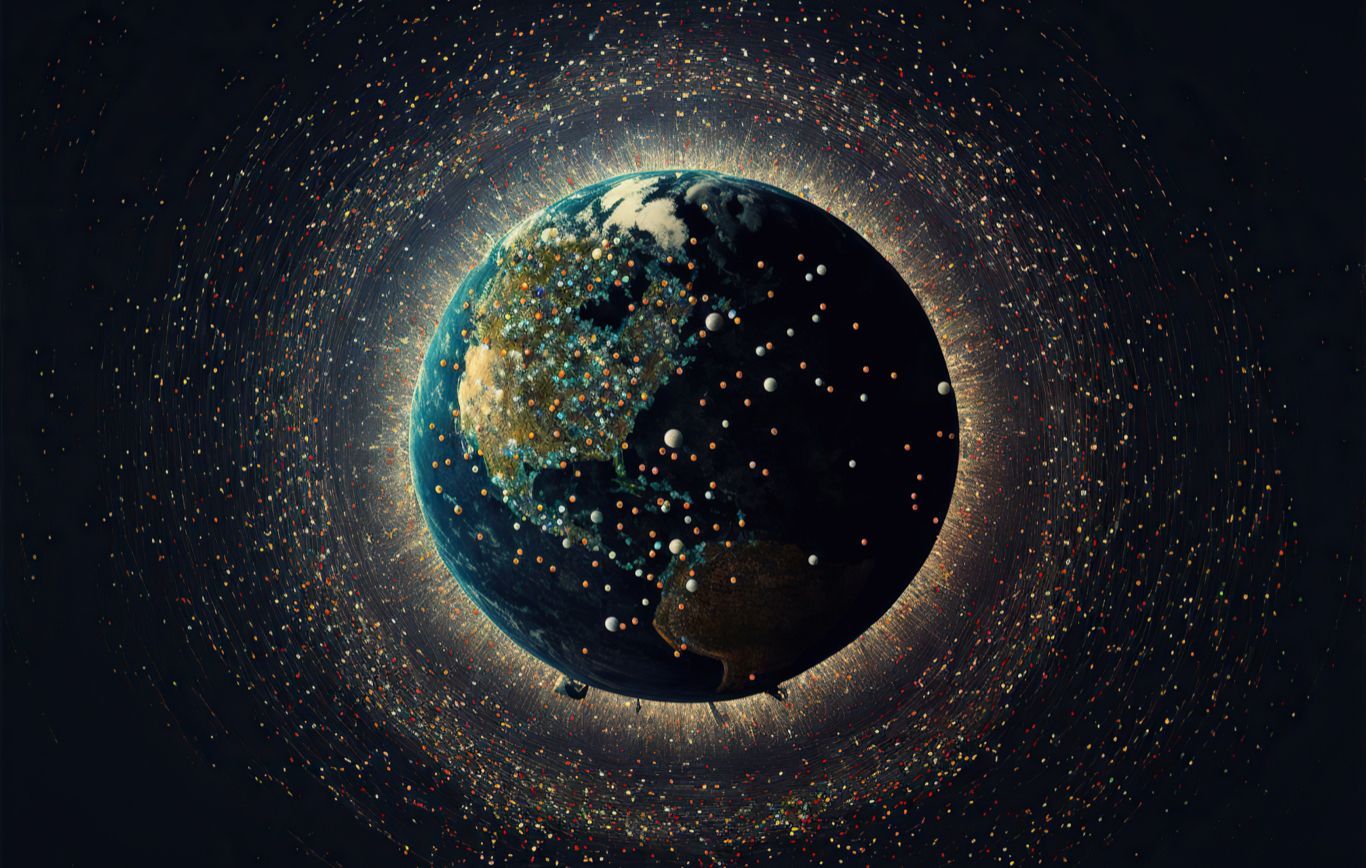
(Image: Adobe)
Within the past couple of weeks we have seen a noticeable shift in focus towards building a sustainable future in space. With a rapidly increasing interest in space and a vastly growing number of objects entering Earth orbit, it is vital that space is maintained in order to protect our future, maximise the possibilities of space and avoid the mistakes humankind have committed on Earth. This urgency comes at a time when nations are forging new and ambitious relationships, and commercial sector influence continues to grow.
After last week’s surprise announcement that India will be joining the US-led Artemis Accords, their framework for outer space activities, there has been more focus within international relations and space cooperation. India this week went on to strengthen their international ties through launching a Strategic Space Dialogue with France, expanding their partnership in space. India’s renewed and developing relationships with western nations could be turning heads in both Beijing and Moscow, as leading space nations race to implement their visions for the future of outer space.
Details have also been revealed surrounding a project between the national space agencies of France, Germany and Japan regarding the Martian Moons eXploration mission. The cooperative mission aims to explore the both the moons of Mars (Phobos and Deimos) using the “Phobos” rover, being provided by the German Aerospace Center (DLR) and the French National Center of Space Studies (CNES).
With the US and European nations seemingly galvanising space relations, Russia and China may be looking towards Africa in order to expand their own global influence. On Sunday, two Chinese-funded satellites were delivered to Egypt, making the country the “first African nation with the capacity to assemble, integrate and test satellites” according to an article from xinhuanet.com. China’s ambassador to Egypt, Liao Liqiang, said that the project was part of the success of their Belt & Road initiative, the Chinese global infrastructure development strategy.
Russia appear also to be set on building relations on the continent. The Algerian Space Agency (ASAL) revealed that a cooperative agreement has been signed with Russia, during President Abdelmadjid Tebboune’s State visit to Russia between the 14th and 16th June. Additionally, ASAL’s director, Azzedine Oussedik, took part in a plenary session focussed on “space cooperation with the BRICS countries”, according to africanews.space.
While relations between the “big three” space powers remains unstable, new partnerships are being formed elsewhere, seemingly on a weekly basis. It’s a positive sign that new international partnerships are being formed, but it is also clear that there remains a threat that the world may be splintering into “space blocs”, led by either the US or China. It could be the role of increasingly influential newer space nations, such as India and the UAE, to prove that working with both of these adversaries is still possible.
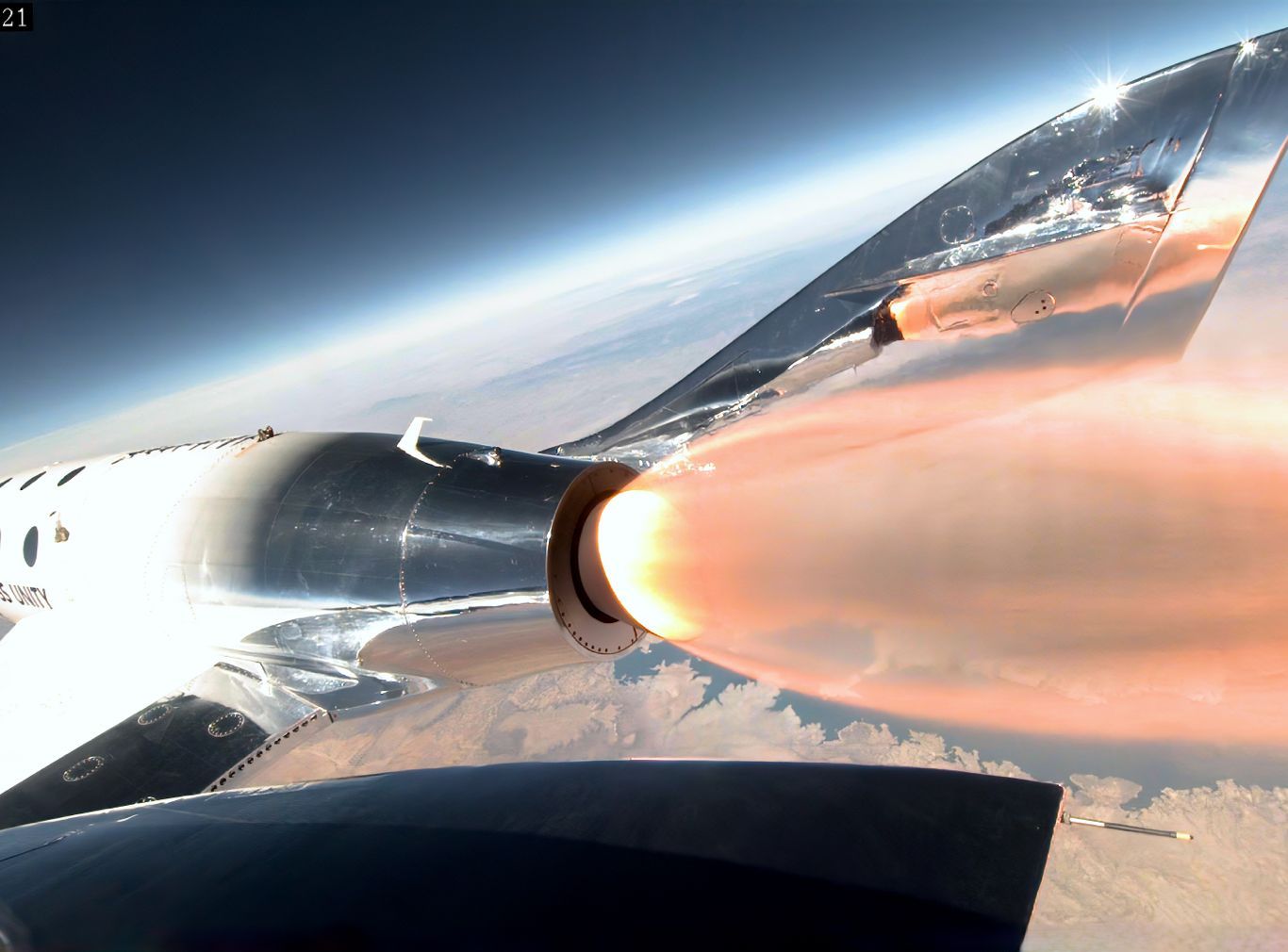
Virgin Galactic begin commercial flight (Image: Virgin Galactic)
Commercial success and steps towards lunar mining
On Thursday, Virgin Galactic carried out the first commercial launch of their spaceplane, VSS Unity. The plane was carried into high altitude using its “mothership” before being released and deploying its own propulsion, flying to the edge of space. Onboard were two pilots from the Italian Air Force and an aerospace engineer from the National Research Council of Italy, who used the flights to carry out experiments in microgravity.
Virgin’s successful flight is yet another indication of how the spacelaunch industry is becoming increasingly dominated by the private sector. SpaceX by far lead the way in launch numbers, topping more than 40 this year already and completing a 100% landing success rate. The majority of those launches are from reused Falcon-9s, the workhorse of the SpaceX fleet.
Chinese launch company, Pioneer Space, are looking to develop a rocket similar to Falcon-9, with a test launch slated for May 2024. The Tianlong-3 would have a reusable first stage and be able to carry 17 tons of payload into low Earth orbit (LEO). Once the company have the rocket online, it could significantly increase China’s access to space and further boost its chances of catching up with its main rival, the United States.
Similarly, ESA took steps towards developing their own reusable rocket tech this week, with the full ignition of its Prometheus Reusable Rocket engine. Development is being carried out under contract by ArianeGroup.
US spaceflight startup, Sierra Space, have provided an update on their long-term plans for their reusable spaceplane, Dreamchaser. Chief Executive, Tom Vice, said that they are working towards their first launch as soon as December, but depends on the readiness of ULA’s new Vulcan rocket, which is facing some delays. Dreamchaser will launch on Vulcan’s second flight and will go on to transport cargo to and from the ISS. Sierra are also reportedly working on a second, crewed version and are even looking into ending dependency on vertical launch partners through exploring the possibility their own horizontal launch technology.
Vice also said last year that there is an industrial revolution underway “250 miles above our heads”, noting the rapid growth of New Space and a sophisticated orbital infrastructure. To this end, Sierra Space are also developing their expandable space habitats, named Large Integrated Flexible Environment (LIFE). The modules are being developed as part of their commitment to the Orbital Reef project, a commercial space station being developed jointly with Blue Origin.
The company are also planning a “pathfinder” mission using one of their modules by 2026. Sierra will offer this module for commercial applications such as pharmaceutical and other biotech research, according to an article from Space News. Using space for medical research and in-space manufacturing is one of the many applications where we are seeing increased interest at the moment.
On June 13th in-space manufacturing company, Varda Space Industries, announced the successful launch of its W-Series Satellite, and this week is due to begin pharmaceutical production. Taking advantage of the advantageous conditions of microgravity, the company aims to manufacture “space drugs” and send them back to Earth using its reentry vehicle. Varda’s first mission will look into developing ritonavir, used in the treatment of HIV.
Varda’s mission, as stated on their website, is “building in space, for life on Earth.” In-space manufacturing is amongst a growing list of reasons why we are are seeing, and expect to see, substantial growth of an orbital infrastructure. This growth is being fuelled and provided by the commercial sector, and it will not stop in Earth orbit.
Discussing the crewed lunar landing missions as part of the US Artemis project, NASA scientist, Gerald Sanders, this week said that a key part of the crewed missions are to advance commercial opportunities in space and quantify resources such as water and lunar soil, in order to attract private investment. According to Reuters, Sanders went on to say that they are trying to “(lower) risk such that external investment makes sense that could lead to development and production”, speaking to a Brisbane mining conference. We may be on course to see lunar mining within 10 years.
The commercial sector continues to play a leading role in driving a space industry that can help humankind, our planet and ongoing outer space exploration. If there’s anything to take away at this stage, it’s that activity in Earth orbit is set for exponential growth.
We’ve made rather a mess of this planet
As we outlined last week, if we are to maximise the the potential of space to benefit Earth, then it’s vital that space is maintained and industries strive to carry out sustainable practices. This week, King Charles III put his support behind the latest UK initiative to promote space sustainability through unveiling the seal for the “Astra Carta” framework. During the unveiling, he said that he hoped “…we can ensure the protection of outer space - having made rather a mess of this planet.”
The Astra Carta framework, constructed by Sustainable Markets Initiative, aims to build sustainable practices throughout the global space industry, and appreciates the role space plays in building a sustainable future for our planet. It also again suggests how European nations seem to be taking a leading role in this area, and may be forming a “leadership through sustainability” model.
British startup, Odin Space, have this week announced that they will soon begin their mission of monitoring and detecting small pieces of space debris, using a sensor recently launched on Italian-based, D-Orbit’s ION orbital transfer vehicle. By 2024 the company aims to launch its next generation sensors and launch more than 10 per year into LEO and geostationary orbit. Although small in size, tiny pieces of debris can be potentially deadly for orbiting satellites and spacecraft.
Also building on sustainability efforts, ESA and three European satellite manufacturers last week announced that they would be working together to deal with orbital debris. Airbus Defence and Space, OHB and Thales Alenia Space say that they will be developing a “Zero Debris Charter”, with the ultimate goal of preventing the release of new debris in orbit. ESA and their partner companies will flesh-out the plans this year, which includes ambitious targets to be achieved by 2030.
We may be on the cusp of a golden age for New Space, driven by the forging of new international relations and a thriving commercial sector. If we are to reap the benefits that space can provide, we must continue to be steadfast in our quest to build bridges where relations are strained, and construct a sustainable space environment. The steps we take now will decide what our futures will look like.
External Links
This Week
*News articles posted here are not property of ANASDA GmbH and belong to their respected owners. Postings here are external links only.
Our future in space
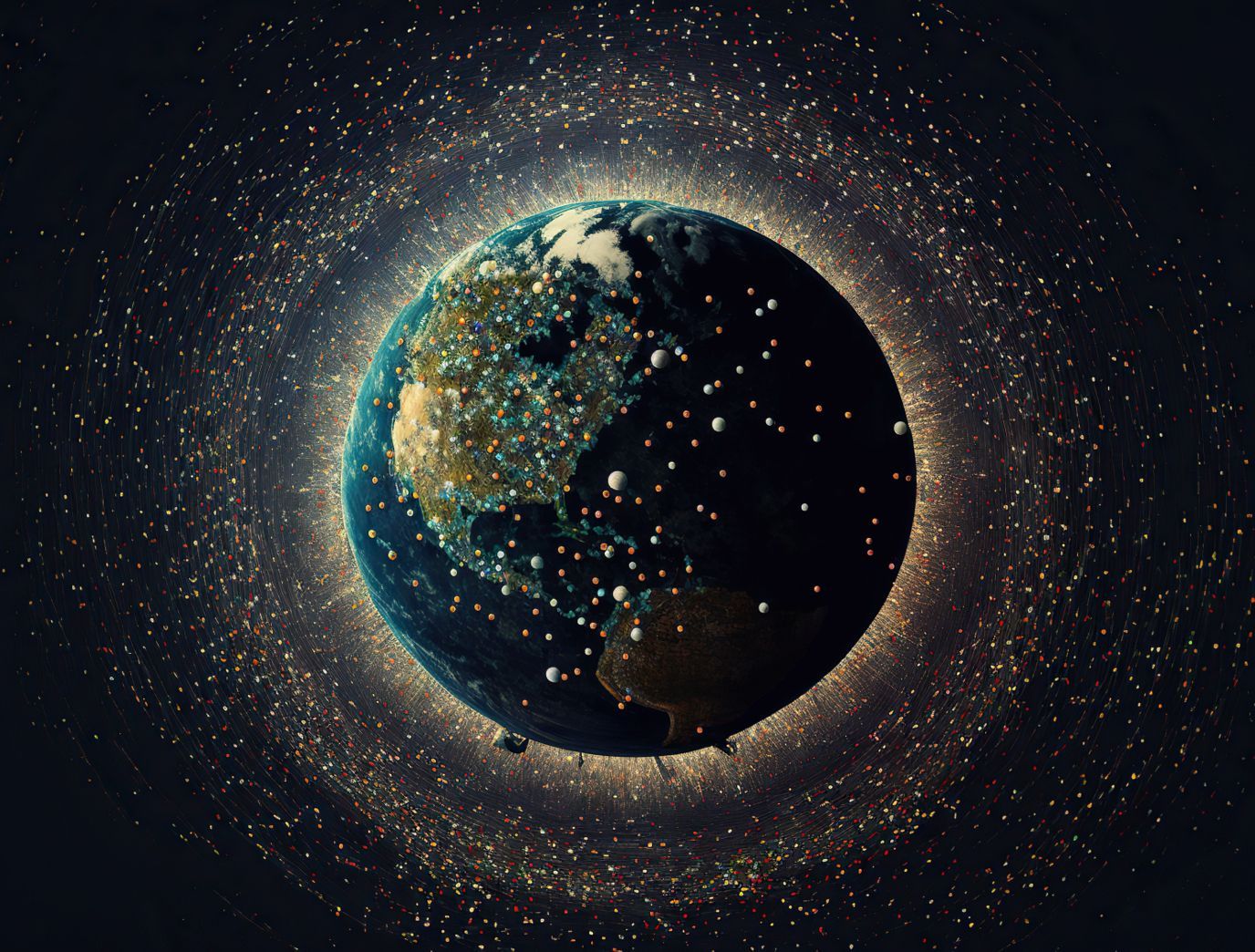
(Image: Adobe)
30 June 2023
Royal seal for space sustainability in an industry entering a golden age - Space News Roundup
Within the past couple of weeks we have seen a noticeable shift in focus towards building a sustainable future in space. With a rapidly increasing interest in space and a vastly growing number of objects entering Earth orbit, it is vital that space is maintained in order to protect our future, maximise the possibilities of space and avoid the mistakes humankind have committed on Earth. This urgency comes at a time when nations are forging new and ambitious relationships, and commercial sector influence continues to grow.
After last week’s surprise announcement that India will be joining the US-led Artemis Accords, their framework for outer space activities, there has been more focus within international relations and space cooperation. India this week went on to strengthen their international ties through launching a Strategic Space Dialogue with France, expanding their partnership in space. India’s renewed and developing relationships with western nations could be turning heads in both Beijing and Moscow, as leading space nations race to implement their visions for the future of outer space.
Details have also been revealed surrounding a project between the national space agencies of France, Germany and Japan regarding the Martian Moons eXploration mission. The cooperative mission aims to explore the both the moons of Mars (Phobos and Deimos) using the “Phobos” rover, being provided by the German Aerospace Center (DLR) and the French National Center of Space Studies (CNES).
With the US and European nations seemingly galvanising space relations, Russia and China may be looking towards Africa in order to expand their own global influence. On Sunday, two Chinese-funded satellites were delivered to Egypt, making the country the “first African nation with the capacity to assemble, integrate and test satellites” according to an article from xinhuanet.com. China’s ambassador to Egypt, Liao Liqiang, said that the project was part of the success of their Belt & Road initiative, the Chinese global infrastructure development strategy.
Russia appear also to be set on building relations on the continent. The Algerian Space Agency (ASAL) revealed that a cooperative agreement has been signed with Russia, during President Abdelmadjid Tebboune’s State visit to Russia between the 14th and 16th June. Additionally, ASAL’s director, Azzedine Oussedik, took part in a plenary session focussed on “space cooperation with the BRICS countries”, according to africanews.space.
While relations between the “big three” space powers remains unstable, new partnerships are being formed elsewhere, seemingly on a weekly basis. It’s a positive sign that new international partnerships are being formed, but it is also clear that there remains a threat that the world may be splintering into “space blocs”, led by either the US or China. It could be the role of increasingly influential newer space nations, such as India and the UAE, to prove that working with both of these adversaries is still possible.
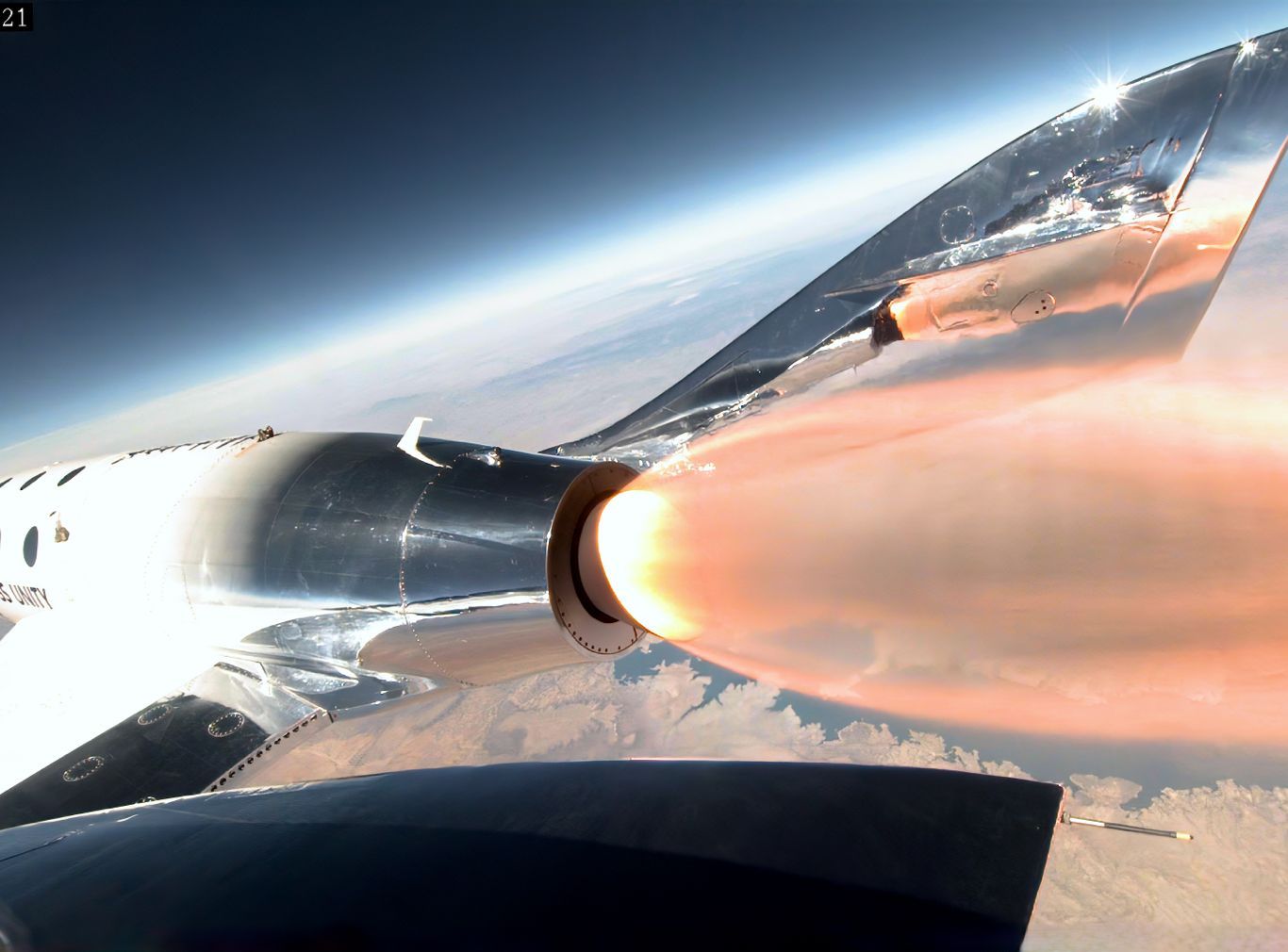
ESA's Copernicus Programme (Image: ESA)
Commercial success and steps towards lunar mining
On Thursday, Virgin Galactic carried out the first commercial launch of their spaceplane, VSS Unity. The plane was carried into high altitude using its “mothership” before being released and deploying its own propulsion, flying to the edge of space. Onboard were two pilots from the Italian Air Force and an aerospace engineer from the National Research Council of Italy, who used the flights to carry out experiments in microgravity.
Virgin’s successful flight is yet another indication of how the spacelaunch industry is becoming increasingly dominated by the private sector. SpaceX by far lead the way in launch numbers, topping more than 40 this year already and completing a 100% landing success rate. The majority of those launches are from reused Falcon-9s, the workhorse of the SpaceX fleet.
Chinese launch company, Pioneer Space, are looking to develop a rocket similar to Falcon-9, with a test launch slated for May 2024. The Tianlong-3 would have a reusable first stage and be able to carry 17 tons of payload into low Earth orbit (LEO). Once the company have the rocket online, it could significantly increase China’s access to space and further boost its chances of catching up with its main rival, the United States.
Similarly, ESA took steps towards developing their own reusable rocket tech this week, with the full ignition of its Prometheus Reusable Rocket engine. Development is being carried out under contract by ArianeGroup.
US spaceflight startup, Sierra Space, have provided an update on their long-term plans for their reusable spaceplane, Dreamchaser. Chief Executive, Tom Vice, said that they are working towards their first launch as soon as December, but depends on the readiness of ULA’s new Vulcan rocket, which is facing some delays. Dreamchaser will launch on Vulcan’s second flight and will go on to transport cargo to and from the ISS. Sierra are also reportedly working on a second, crewed version and are even looking into ending dependency on vertical launch partners through exploring the possibility their own horizontal launch technology.
Vice also said last year that there is an industrial revolution underway “250 miles above our heads”, noting the rapid growth of New Space and a sophisticated orbital infrastructure. To this end, Sierra Space are also developing their expandable space habitats, named Large Integrated Flexible Environment (LIFE). The modules are being developed as part of their commitment to the Orbital Reef project, a commercial space station being developed jointly with Blue Origin.
The company are also planning a “pathfinder” mission using one of their modules by 2026. Sierra will offer this module for commercial applications such as pharmaceutical and other biotech research, according to an article from Space News. Using space for medical research and in-space manufacturing is one of the many applications where we are seeing increased interest at the moment.
On June 13th in-space manufacturing company, Varda Space Industries, announced the successful launch of its W-Series Satellite, and this week is due to begin pharmaceutical production. Taking advantage of the advantageous conditions of microgravity, the company aims to manufacture “space drugs” and send them back to Earth using its reentry vehicle. Varda’s first mission will look into developing ritonavir, used in the treatment of HIV.
Varda’s mission, as stated on their website, is “building in space, for life on Earth.” In-space manufacturing is amongst a growing list of reasons why we are are seeing, and expect to see, substantial growth of an orbital infrastructure. This growth is being fuelled and provided by the commercial sector, and it will not stop in Earth orbit.
Discussing the crewed lunar landing missions as part of the US Artemis project, NASA scientist, Gerald Sanders, this week said that a key part of the crewed missions are to advance commercial opportunities in space and quantify resources such as water and lunar soil, in order to attract private investment. According to Reuters, Sanders went on to say that they are trying to “(lower) risk such that external investment makes sense that could lead to development and production”, speaking to a Brisbane mining conference. We may be on course to see lunar mining within 10 years.
The commercial sector continues to play a leading role in driving a space industry that can help humankind, our planet and ongoing outer space exploration. If there’s anything to take away at this stage, it’s that activity in Earth orbit is set for exponential growth.
We’ve made rather a mess of this planet
As we outlined last week, if we are to maximise the the potential of space to benefit Earth, then it’s vital that space is maintained and industries strive to carry out sustainable practices. This week, King Charles III put his support behind the latest UK initiative to promote space sustainability through unveiling the seal for the “Astra Carta” framework. During the unveiling, he said that he hoped “…we can ensure the protection of outer space - having made rather a mess of this planet.”
The Astra Carta framework, constructed by Sustainable Markets Initiative, aims to build sustainable practices throughout the global space industry, and appreciates the role space plays in building a sustainable future for our planet. It also again suggests how European nations seem to be taking a leading role in this area, and may be forming a “leadership through sustainability” model.
British startup, Odin Space, have this week announced that they will soon begin their mission of monitoring and detecting small pieces of space debris, using a sensor recently launched on Italian-based, D-Orbit’s ION orbital transfer vehicle. By 2024 the company aims to launch its next generation sensors and launch more than 10 per year into LEO and geostationary orbit. Although small in size, tiny pieces of debris can be potentially deadly for orbiting satellites and spacecraft.
Also building on sustainability efforts, ESA and three European satellite manufacturers last week announced that they would be working together to deal with orbital debris. Airbus Defence and Space, OHB and Thales Alenia Space say that they will be developing a “Zero Debris Charter”, with the ultimate goal of preventing the release of new debris in orbit. ESA and their partner companies will flesh-out the plans this year, which includes ambitious targets to be achieved by 2030.
We may be on the cusp of a golden age for New Space, driven by the forging of new international relations and a thriving commercial sector. If we are to reap the benefits that space can provide, we must continue to be steadfast in our quest to build bridges where relations are strained, and construct a sustainable space environment. The steps we take now will decide what our futures will look like.
Share this article
External Links
This Week
*News articles posted here are not property of ANASDA GmbH and belong to their respected owners. Postings here are external links only.
30 June 2023
Royal seal for space sustainability in an industry entering a golden age - Space News Roundup
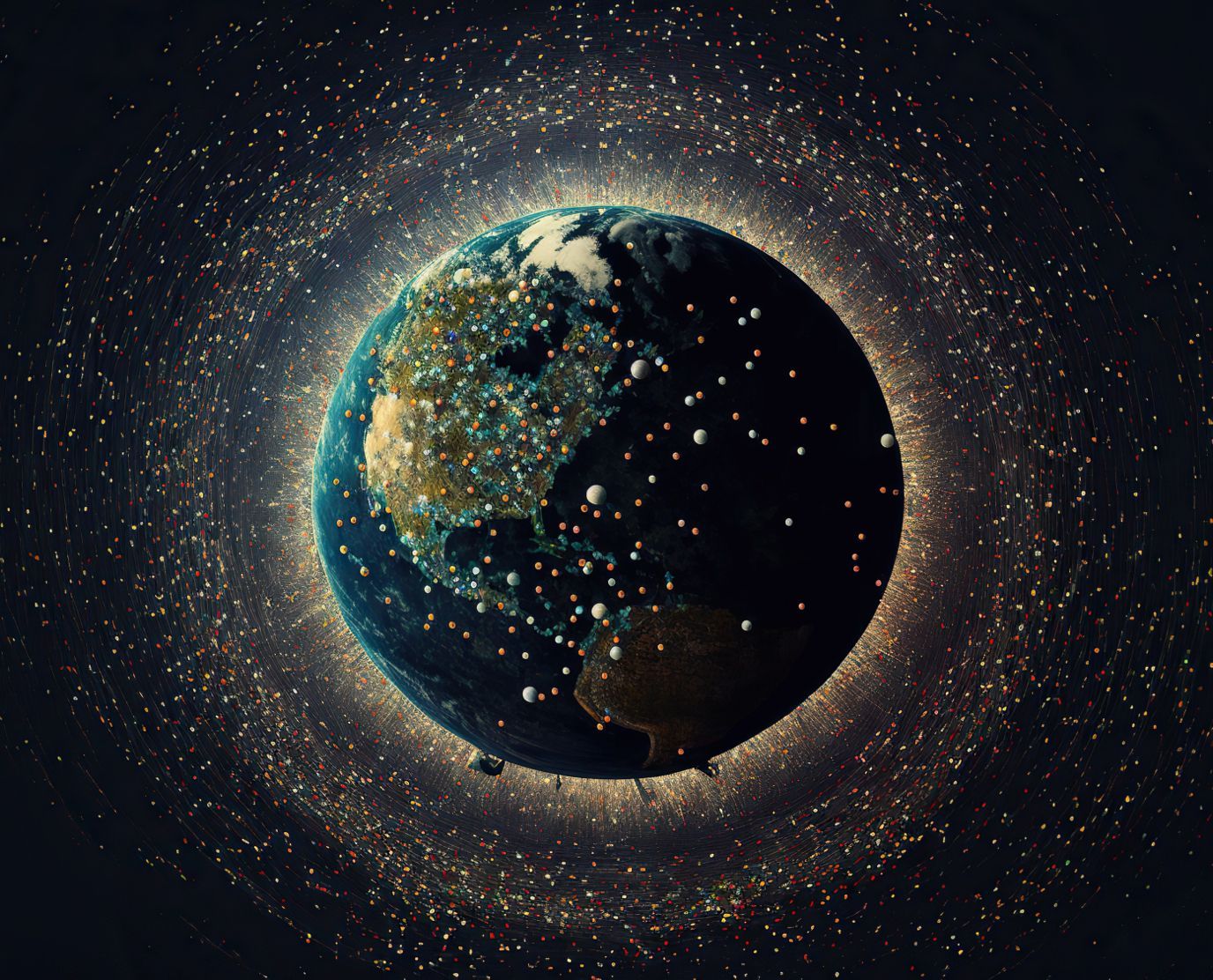
(Image: Adobe)
Within the past couple of weeks we have seen a noticeable shift in focus towards building a sustainable future in space. With a rapidly increasing interest in space and a vastly growing number of objects entering Earth orbit, it is vital that space is maintained in order to protect our future, maximise the possibilities of space and avoid the mistakes humankind have committed on Earth. This urgency comes at a time when nations are forging new and ambitious relationships, and commercial sector influence continues to grow.
After last week’s surprise announcement that India will be joining the US-led Artemis Accords, their framework for outer space activities, there has been more focus within international relations and space cooperation. India this week went on to strengthen their international ties through launching a Strategic Space Dialogue with France, expanding their partnership in space. India’s renewed and developing relationships with western nations could be turning heads in both Beijing and Moscow, as leading space nations race to implement their visions for the future of outer space.
Details have also been revealed surrounding a project between the national space agencies of France, Germany and Japan regarding the Martian Moons eXploration mission. The cooperative mission aims to explore the both the moons of Mars (Phobos and Deimos) using the “Phobos” rover, being provided by the German Aerospace Center (DLR) and the French National Center of Space Studies (CNES).
With the US and European nations seemingly galvanising space relations, Russia and China may be looking towards Africa in order to expand their own global influence. On Sunday, two Chinese-funded satellites were delivered to Egypt, making the country the “first African nation with the capacity to assemble, integrate and test satellites” according to an article from xinhuanet.com. China’s ambassador to Egypt, Liao Liqiang, said that the project was part of the success of their Belt & Road initiative, the Chinese global infrastructure development strategy.
Russia appear also to be set on building relations on the continent. The Algerian Space Agency (ASAL) revealed that a cooperative agreement has been signed with Russia, during President Abdelmadjid Tebboune’s State visit to Russia between the 14th and 16th June. Additionally, ASAL’s director, Azzedine Oussedik, took part in a plenary session focussed on “space cooperation with the BRICS countries”, according to africanews.space.
While relations between the “big three” space powers remains unstable, new partnerships are being formed elsewhere, seemingly on a weekly basis. It’s a positive sign that new international partnerships are being formed, but it is also clear that there remains a threat that the world may be splintering into “space blocs”, led by either the US or China. It could be the role of increasingly influential newer space nations, such as India and the UAE, to prove that working with both of these adversaries is still possible.
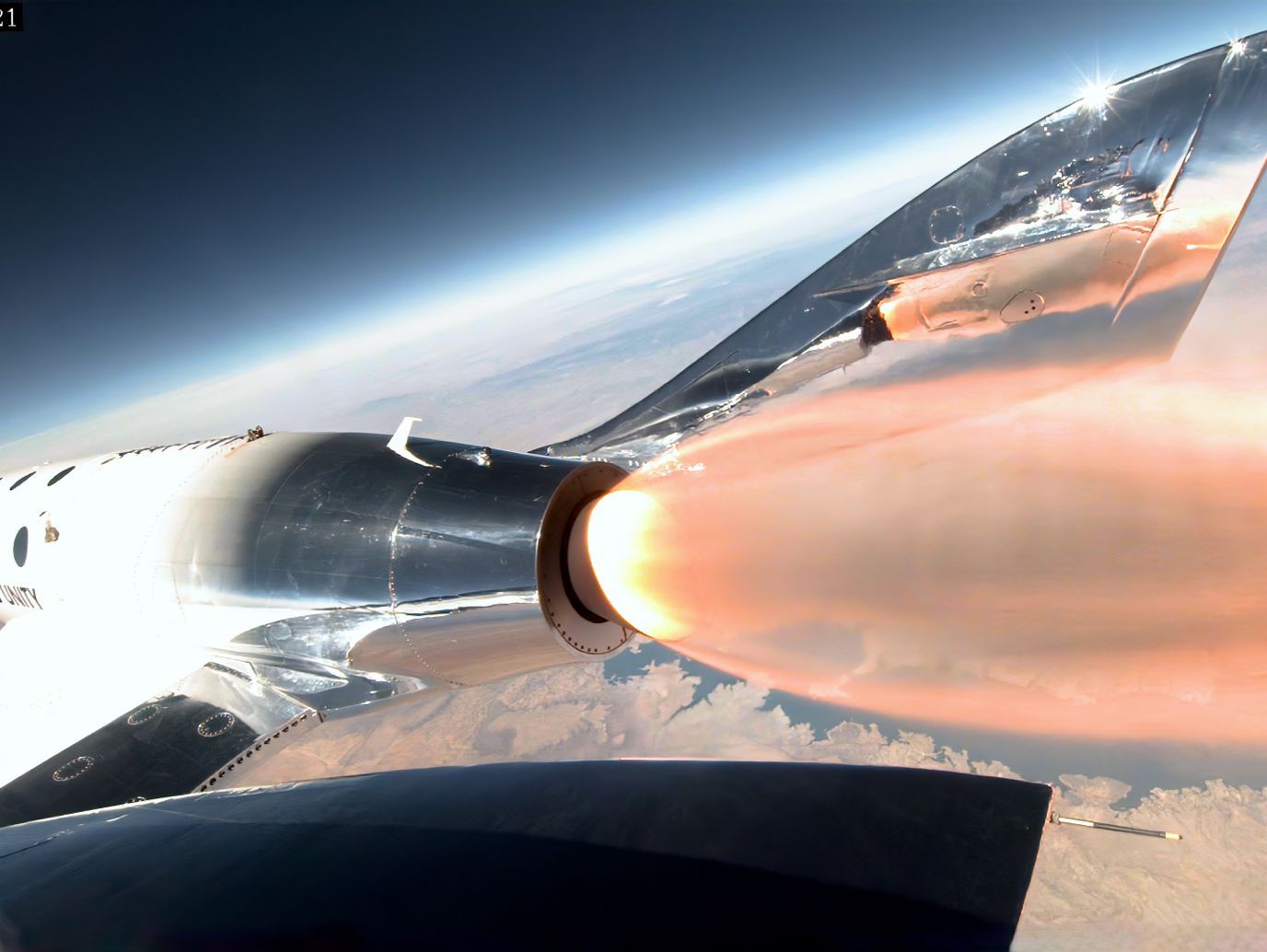
Virgin Galactic begin commercial flight (Image: Virgin Galactic)
Commercial success and steps towards lunar mining
On Thursday, Virgin Galactic carried out the first commercial launch of their spaceplane, VSS Unity. The plane was carried into high altitude using its “mothership” before being released and deploying its own propulsion, flying to the edge of space. Onboard were two pilots from the Italian Air Force and an aerospace engineer from the National Research Council of Italy, who used the flights to carry out experiments in microgravity.
Virgin’s successful flight is yet another indication of how the launch industry is becoming increasingly dominated by the private sector. SpaceX by far lead the way in launch numbers, topping more than 40 this year already and completing a 100% landing success rate. The majority of those launches are from reused Falcon-9s, the workhorse of the SpaceX fleet.
Chinese launch company, Pioneer Space, are looking to develop a rocket similar to Falcon-9, with a test launch slated for May 2024. The Tianlong-3 would have a reusable first stage and be able to carry 17 tons of payload into low Earth orbit (LEO). Once the company have the rocket online, it could significantly increase China’s access to space and further boost its chances of catching up with its main rival, the United States.
Similarly, ESA took steps towards developing their own reusable rocket tech this week, with the full ignition of its Prometheus Reusable Rocket engine. Development is being carried out under contract by ArianeGroup.
US spaceflight startup, Sierra Space, have provided an update on their long-term plans for their reusable spaceplane, Dreamchaser. Chief Executive, Tom Vice, said that they are working towards their first launch as soon as December, but depends on the readiness of ULA’s new Vulcan rocket, which is facing some delays. Dreamchaser will launch on Vulcan’s second flight and will go on to transport cargo to and from the ISS. Sierra are also reportedly working on a second, crewed version and are even looking into ending dependency on vertical launch partners through exploring the possibility their own horizontal launch technology.
Vice also said last year that there is an industrial revolution underway “250 miles above our heads”, noting the rapid growth of New Space and a sophisticated orbital infrastructure. To this end, Sierra Space are also developing their expandable space habitats, named Large Integrated Flexible Environment (LIFE). The modules are being developed as part of their commitment to the Orbital Reef project, a commercial space station being developed jointly with Blue Origin.
The company are also planning a “pathfinder” mission using one of their modules by 2026. Sierra will offer this module for commercial applications such as pharmaceutical and other biotech research, according to an article from Space News. Using space for medical research and in-space manufacturing is one of the many applications where we are seeing increased interest at the moment.
On June 13th in-space manufacturing company, Varda Space Industries, announced the successful launch of its W-Series Satellite, and this week is due to begin pharmaceutical production. Taking advantage of the advantageous conditions of microgravity, the company aims to manufacture “space drugs” and send them back to Earth using its reentry vehicle. Varda’s first mission will look into developing ritonavir, used in the treatment of HIV.
Varda’s mission, as stated on their website, is “building in space, for life on Earth.” In-space manufacturing is amongst a growing list of reasons why we are are seeing, and expect to see, substantial growth of an orbital infrastructure. This growth is being fuelled and provided by the commercial sector, and it will not stop in Earth orbit.
Discussing the crewed lunar landing missions as part of the US Artemis project, NASA scientist, Gerald Sanders, this week said that a key part of the crewed missions are to advance commercial opportunities in space and quantify resources such as water and lunar soil, in order to attract private investment. According to Reuters, Sanders went on to say that they are trying to “(lower) risk such that external investment makes sense that could lead to development and production”, speaking to a Brisbane mining conference. We may be on course to see lunar mining within 10 years.
The commercial sector continues to play a leading role in driving a space industry that can help humankind, our planet and ongoing outer space exploration. If there’s anything to take away at this stage, it’s that activity in Earth orbit is set for exponential growth.
We’ve made rather a mess of this planet
As we outlined last week, if we are to maximise the the potential of space to benefit Earth, then it’s vital that space is maintained and industries strive to carry out sustainable practices. This week, King Charles III put his support behind the latest UK initiative to promote space sustainability through unveiling the seal for the “Astra Carta” framework. During the unveiling, he said that he hoped “…we can ensure the protection of outer space - having made rather a mess of this planet.”
The Astra Carta framework, constructed by Sustainable Markets Initiative, aims to build sustainable practices throughout the global space industry, and appreciates the role space plays in building a sustainable future for our planet. It also again suggests how European nations seem to be taking a leading role in this area, and may be forming a “leadership through sustainability” model.
British startup, Odin Space, have this week announced that they will soon begin their mission of monitoring and detecting small pieces of space debris, using a sensor recently launched on Italian-based, D-Orbit’s ION orbital transfer vehicle. By 2024 the company aims to launch its next generation sensors and launch more than 10 per year into LEO and geostationary orbit. Although small in size, tiny pieces of debris can be potentially deadly for orbiting satellites and spacecraft.
Also building on sustainability efforts, ESA and three European satellite manufacturers last week announced that they would be working together to deal with orbital debris. Airbus Defence and Space, OHB and Thales Alenia Space say that they will be developing a “Zero Debris Charter”, with the ultimate goal of preventing the release of new debris in orbit. ESA and their partner companies will flesh-out the plans this year, which includes ambitious targets to be achieved by 2030.
We may be on the cusp of a golden age for New Space, driven by the forging of new international relations and a thriving commercial sector. If we are to reap the benefits that space can provide, we must continue to be steadfast in our quest to build bridges where relations are strained, and construct a sustainable space environment. The steps we take now will decide what our futures will look like.
Share this article
External Links
This Week
*News articles posted here are not property of ANASDA GmbH and belong to their respected owners. Postings here are external links only.














